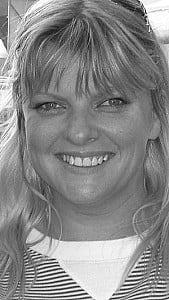British English narration
Description
Vocal Characteristics
Language
EnglishVoice Age
Middle Aged (35-54)Accents
British (General)Transcript
Note: Transcripts are generated using speech recognition software and may contain errors.
Planet Earth is the blue planet. When astronauts in space look down on Earth, water covers 71% of the planet and it looks as if our planet is blue. All plants, animals including humans can live here on earth because there is water. Water is the basic element of nature. It covers 71% of the Earth's surface. And not only does water make life on earth possible, but it is also constantly moving from a gas to a liquid. And in some cases, a solid as water cycles from air to land to sea and back again, water shapes our planet and almost every aspect of our lives. The water on our planet has been around for billions of years. And what is more amazing is that it is the same water that has been used and reused over and over again. Even the dinosaurs used the same water we have today. Water molecule, a water molecule consists of three atoms, an oxygen atom and two hydrogen atoms which bond together like magnets. Water is made up of two parts of hydrogen and one part of oxygen giving it the chemical formula H 20 water is life. Every living thing requires water to live. And even though it has no color, it lacks taste and it doesn't smell like anything. Water provides the basic necessities to live without water. Life on earth would not exist. three forms of water. Water comes in three forms. Water is a liquid, a solid as in snow and ice and in the atmosphere as in clouds and invisible water vapor, the water cycle, water is always in constant motion all around us. From the clouds to the oceans and into the atmosphere. This movement is called the water cycle evaporation. When the sun warms the environment and the earth's surface water heats up and starts to change. This is the first step of the water cycle changing its form from a liquid to a vapor and rising up into the sky. This is called evaporation condensation. As the water gets high up into our atmosphere, it cools down and forms clouds as it begins to change into liquid water. This is the second stage of the water cycle and it is called condensation. These soft and fluffy clouds are actually lots of little droplets of water suspended in the air and being pushed around by the wind and eventually form raindrops, precipitation. The clouds then pour down as precipitation due to wind or temperature change. This occurs because the water droplets combined to make bigger droplets. The moment when the cloud cannot hold any more water, it precipitates at high altitudes, the temperature is low and hence the droplets lose their heat energy. These water droplets fall down as rain. If the temperature is very low below 0°, then the water droplets fall as snow, ice or other solid forms of water. Precipitation is the exit ramp back to earth from the water cycle superhighway in the sky that is moving clouds all around the globe.
